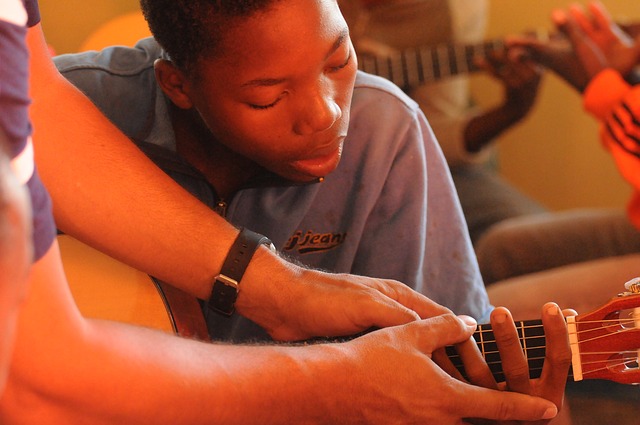 The Rite of Christian Initiation of Adults says that a suitable catechesis…
The Rite of Christian Initiation of Adults says that a suitable catechesis…
- is gradual and complete in its coverage,
- is accommodated to the liturgical year,
- is solidly supported by celebrations of the word
- leads the catechumens to an appropriate acquaintance with dogmas and precepts
- leads the catechumens to a profound sense of the mystery of salvation (see RCIA 75.1)
Those who are new to RCIA ministry are sometimes overwhelmed by the scope of the catechesis they must provide for the catechumens. However, it is not as daunting as it might seem.
The key to providing everything the RCIA calls for is to pay attention to each aspect of paragraph 75.1, starting with the fact that this is a gradual process. If your RCIA program begins in September or October and ends at the following Easter, you cannot possibly provide a suitable and complete catechesis.
The liturgical year is your guide
The reason that is not possible is made clear in the second clause of 75.1: this catechesis must be accommodated to the liturgical year. By immersing the catechumens in the observance and celebration of the liturgical year, they encounter the full mystery of Christ.
If you make sure your catechumens are celebrating the Liturgy of the Word every Sunday for a full liturgical year, 90 percent of your work is done for you. In the celebration of the liturgy, throughout the liturgical year, the catechumens will learn the core teachings of our faith. Our role as catechists is to use a mystagogical process to link the experience of the catechumens in the liturgy and what they learned there with the “dogmas and precepts” of the church.
This is a process of helping clarify for them what they already “know” from their encounter with the Risen Christ in the liturgy. If we do the mystagogical process well, we will meet the criteria of the final clause of 75.1, leading the catechumens to a profound sense of the mystery of salvation.
The mystagogical process
The most important thing to understand about mystagogy is that it is a Spirit-led process. As catechists, we try our best to follow the prompting of the Holy Spirit, and it is ultimately the Spirit who teaches the catechumens.
The Spirit-led teaching begins in the liturgy as the catechumens experience Christ. The Spirit speaks to the hearts of the catechumens, causing them to remember aspects of their experience that will be most beneficial for them. Our job is to help the catechumens remember, after the liturgy, what they experienced. What most spoke to them in the liturgy? What moved them? What impressed them? What spoke to their hearts?
As the catechumens share their memories with us, our next step is to ask the catechumens to draw conclusions. Did they learn anything from the experience? Did they get any insights into Jesus or our faith? Do they know something now that they didn’t know before?
If you ask active Catholics questions like these after a liturgy, they will say things that reflect deep, important teachings of the church. Catechumens, however, are likely to answer on a much more superficial level.
Here is where our skill as catechists comes to bear. As the catechumens touch upon aspects of our faith in their recollections, we then guide them to a deeper, next level. For example, if a catechumen remembered that Jesus fed 5,000 people with a few loaves and fish, and the catechumen learned that Jesus can work miracles, we would obviously want to take that to a deeper level.
We could ask the catechumens if they know of any other stories involving Jesus and meals. We could talk about saints who showed extraordinary, sacrificial hospitality. We could point out that we believe everyone is fed the Body of Christ in the Eucharist. And then we could affirm the catechumen’s insight that Jesus does indeed work miracles, and his miracles always have a deeper message.
The final step in a mystagogical process is to add a “so what?” We conclude by asking the catechumens what difference their experience of Jesus in the liturgy and what they learned because of that will make in their lives this week. If Jesus calls us to sacrificial hospitality, even when our resources are few, how will we live differently this coming week?
This final step is vital for solidifying the final clause of 75.1, leading the catechumens to a profound sense of the mystery of salvation. As they begin to live their lives according to what they learned in the liturgy, they will gradually become more and more aware of the mystery into which they will be baptized.
Suitable catechesis, step by step
So the steps for providing a suitable catechesis for the catechumens are:
- Provide ongoing encounters with the Risen Christ in the Sunday liturgy, throughout the liturgical year
- Ask the catechumens to remember what they experienced and what they learned from that experience
- Connect what the catechumens learned to the deeper teaching of the church
- Challenge the catechumens to conform their lives to their new learning
If you engage in this mystagogical process regularly over the course of the liturgical year, they will be suitably catechized to be able to profess their faith at their baptism.
What do you think?
What steps are you taking to provide a suitable catechesis for your catechumens? How are you accommodating that catechesis to the liturgical year? How does your catechesis lead the catechumens to a profound sense of the mystery of salvation?









Hello Team RCIA
Thank you very much for sharing with us your work. This is very useful and helpful to our work in the Parish, The Holy Infant Jesus (Philippines).
We are preparing to put together a Parish RCIA Program and knowing about your Team an d what you do is Heaven-sent.
Just curious . . . Does Ms. Macalintal have Philippine roots? Her family name sounds Filipino.
Thank you again.
God bless you all.
Elena